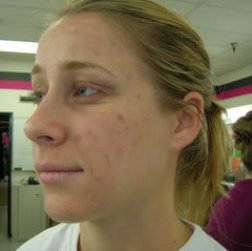People often want to know how to fade age spots because, while age spots are not harmful to your health and generally require no medical treatment, people often dislike the way they look. Sometimes referred to as liver spots rather than age spots, the brown or black spots often appear on the face, the backs of the hands, and other highly visible areas. People want them removed in order to improve their appearance or to look more youthful.
How to Fade Age Spots
There are many treatments designed to fade or remove age spots. The right treatment for you will depend on your needs, preferences, and desired results. We’ll tell you about your various options. Talk with your doctor or a dermatologist if you have questions about the best treatment for you.
Home Remedies – There are a number of home remedies people sometimes try to fade age spots, including putting lemon juice, slices of raw cucumber or onion, apple cider vinegar, or yogurt on the spots. Most of these are unlikely to be very effective. You can read more about home remedies for age spots here.
Bleaching Creams – Prescription skin bleaching creams like hydroquinone cause age spots to fade, though they can have unwanted side effects like dry skin, cracking skin, a burning or stinging sensation, swelling, permanent discoloration of the skin, and potentially serious allergic reactions. Pregnant and breastfeeding women are advised not to use hydroquinone.
Tretinoin Cream – Tretinoin cream is a topical prescription medication most often used to treat severe acne. It is also sometimes used to treat age spots as well as other skin conditions(1). Tretinoin cream carries the risk of some very serious side effects, so talk to your doctor about the risks and benefits before deciding to use it. Potential side effects include dry skin, itching, temporary worsening of acne, a severe burning sensation, swelling, blisters, increased sensitivity to sunlight, discoloration of the skin, and potentially severe allergic reactions. Tretinoin cream should not be used by pregnant women due to the risk of severe birth defects. It also interacts with certain other medications so make sure you tell your doctor about all other medications, prescriptions, and over-the-counter, you are taking, as well as any vitamins or herbal supplements.

Dermabrasion – Dermabrasion is a minor surgical procedure in which the top layer of skin is surgically sanded away, revealing more youthful-looking, unblemished skin underneath. It’s effective for removing age spots but it does carry a number of risks, including pain, swelling, tissue damage, scarring, and infection. It’s also expensive and health insurance policies usually don’t cover it since it is considered cosmetic and not medically necessary.
Chemical Peels – Chemical peels involve the use of chemical solutions applied to the skin, which essentially burns the top layer of skin, causing it to peel away much like a bad sunburn. Like dermabrasion, chemical peels are effective at removing age spots but are expensive and carry a number of risks, including pain, scars, blisters, swelling, and discoloration of the skin, which can be permanent.
Laser Resurfacing – Laser resurfacing involves the use of lasers to peel away the top layer of skin, revealing more youthful-looking skin underneath. Like other minor surgical procedures to remove age spots, it is effective but expensive. It can also cause unwanted side effects, such as pain, swelling, excessive bleeding, discoloration of the skin, and infection. Sometimes more than one treatment is required in order to achieve the desired results.
Cryosurgery – Cryosurgery, sometimes referred to as cryotherapy, involves the use of liquid nitrogen to freeze the discolored skin of liver spots. The frozen skin then peels away, removing the spots. Cryosurgery is often used to remove warts but it’s also effective for removing age spots. Like other medical procedures to remove age spots, it can be costly and is usually not covered by health insurance policies. Risks associated with cryosurgery include pain, discoloration of the skin, and scarring.
If you’re feeling discouraged after reading about some of the common treatments for liver spots, don’t worry. There are alternatives.
Our Preferred Treatment to Fade Liver Spots
Our preferred treatment for fading age or liver spots is a homeopathic remedy called H-Age Spots Formula. It gently causes the spots to fade without causing pain, blistering, or other harmful effects. It’s much more affordable than surgical procedures like dermabrasion and laser resurfacing and you don’t need a prescription. To find out more about how to fade age spots with H-Age Spots Formula, just follow the link.
